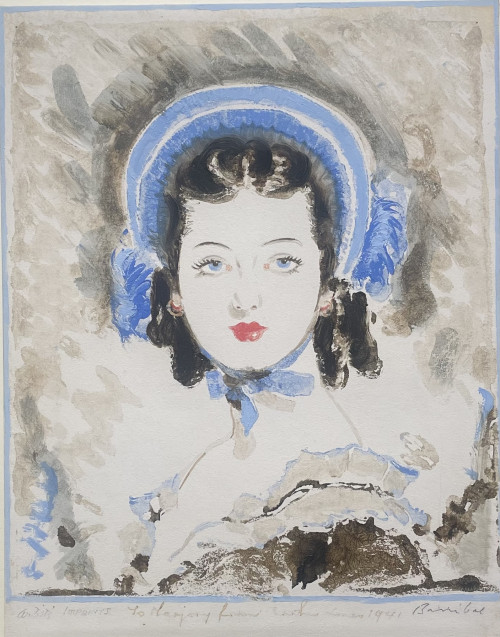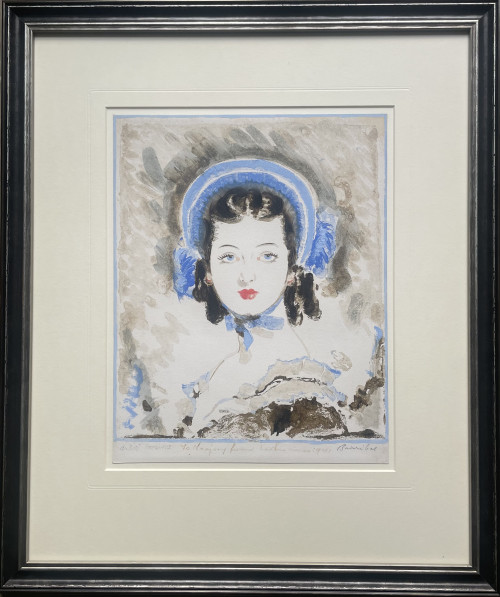- HOME
-
- View All Items
- New Arrivals
- Featured Items
- Artists
-
- View All
- Contemporary
- Birmingham School
- Cotswold Group
- Landscape
- Urban Townscape
- Abstract
- Animals/Birds
- Arts & Crafts
- British Impressionist
- Botanical
- Design/Industrial
- Fantasy/Fairy Subjects
- Female Artists
- Figurative
- Historical
- Illustration/Cartoon
- Marine
- Military/War Artist
- Modern British
- Pre-raphaelite/ Romantic/ Aesthetic
- Nude
- Portrait
- Prints
- Scottish
- Sculpture
- Sporting
- Still Life
- Theatrical
- Interiors/Architectural
-
ARCHIVE
Genre
- View All
- Contemporary
- Birmingham School
- Cotswold Group
- Landscape
- Urban Townscape
- Abstract
- Animals/Birds
- Arts & Crafts
- British Impressionist
- Botanical
- Design/Industrial
- Fantasy/Fairy Subjects
- Female Artists
- Figurative
- Historical
- Illustration/Cartoon
- Marine
- Military/War Artist
- Modern British
- Pre-raphaelite/ Romantic/ Aesthetic
- Nude
- Portrait
- Prints
- Scottish
- Sculpture
- Sporting
- Still Life
- Theatrical
- Interiors/Architectural
- ARTISTS
- Online Exhibitions
- Events
- About
- Contact
- Home
- Medium
- Watercolour & Drawing
- Tailpiece for 'A Rainy Day' , watercolour illustration by John George Sowerby
Tailpiece for 'A Rainy Day' , watercolour illustration by John George Sowerby
Tailpiece for 'A Rainy Day' , watercolour illustration by John George Sowerby
2651
JOHN GEORGE SOWERBY (1849-1914)
Tailpiece for “A Rainy Day”
Watercolour heightened with white, circular
Unframed, in mount only
Diameter 7 cm., 2 in. (mount size 25.5 by 20 cm., 10 by 8 in.)
Reproduced: J G Sowerby & Thomas Crane, At Home, Marcus Ward & Co, 1881, p.17.
The current work was reproduced in Sowerby and Crane’s 1881 children’s book, At Home, where is accompanied by the following verse:
All the morning, all the morning,
Sat she till her tasks were done;
While without were birds and blossoms,
And the pleasant sun.
And the leaves in ev’ry rustle,
And the birds in ev’ry song:-
“Phoebe, Phoebe, are you coming?
Phoebe, don’t be long!”
Whispered thro’ the open window
Gentle breezes, passing by:-
“Phoebe, are you coming, Phoebe?
Come before we die!”
Till the clock, with joyful measure,
Struck the hour when work is o’er;
Crying “Ponto’” Phoebe vanished
Through the open door.
Whither sped out nimble Phoebe?
She is in the study now;
Ponto heard her with she called him, -
Answered back “Bow-wow!’
“Ponto, tho’ the birds and garden,
Called me all the morning thro’
I had first to do my lessons –
So I think should you.”
Poor old Ponto! He is longing,
Longing for his game of play,
And the garden – ah: but Phoebe
Has a word to say.
“Beg then – beg, sir – do you hear me?
No, no, Ponto, that is wrong;
Paws up! Steady! Ah, that’s better!
Good dog, come along!”
John George Sowerby was born into a prosperous Gateshead family of glass manufactures and artists. He inherited the family business, the Ellison Glass Works, one of the world’s largest producers of pressed glass, where he introduced designs inspired by the Arts and Crafts movement. Initially he combined his energies at the glass works with his work as an illustrator and painter of landscapes and floral subjects with a Pre-Raphaelite intensity, strong colours and rich detail. He exhibited many of these paintings at the Royal Academy. In the 1880s he collaborated with Newcastle artist, Henry Hetherington Emmerson, on illustrations for the children’s books Afternoon Tea (1880) and The May Blossom (1881). Although were critically very well received but the publications were attacked by Kate Greenaway who considered them too close to her own work. Sowerby then went on to produce highly aesthetic illustrated books At Home (1881) and At Home Again (1883), with decorations by Thomas Crane. Gleeson White, editor of The Studio magazine stated that in Afternoon Tea Sowerby “set a new fashion for ‘aesthetic’ little quartos’ (The Studio, 1897). Roger Dixon in Belfast Publishing (Oxford University Press, 2011, p.79) considered these At Home and At Home Again to be “among the loveliest books ever produced.” Never very wise as a business man, in the early 1880s he left Ellison Glass Works being declared bankrupt in 1884. He returned to the works again as a paid employee.
Sowerby’s daughter, Millicent Sowerby, followed in her father’s footsteps and became a successful children’s book illustrator. His daughter, Githa, is best-known for writing the play Rutherford & Son, the main protagonist being a thinly-veiled portrait of her father and his business failings.
Thank you for your enquiry.
We will get back to you soon.
Please create wishlist to add this item to
RELATED ITEMS


















